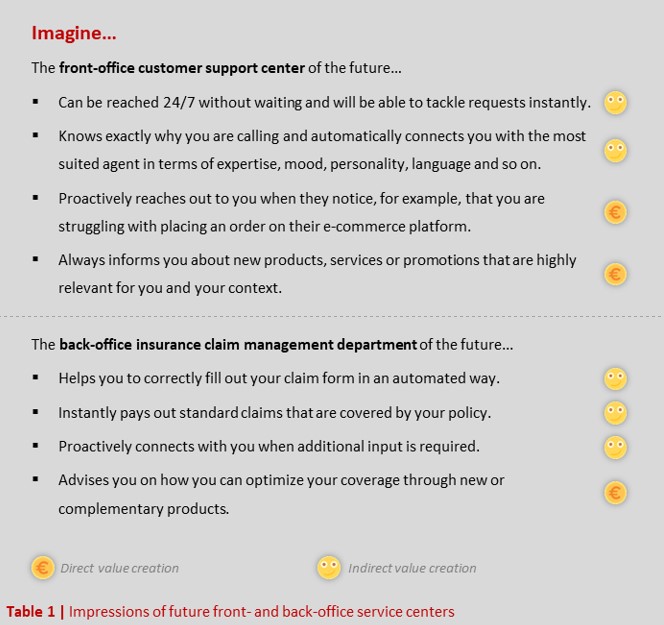A 2016 study by the World Economic Forum estimates that the Fourth Industrial Revolution will lead to the loss of over five million jobs in 15 developed countries. This report projects that these labor cost savings will result from redundancy, automation, or disintermediation enabled by cutting-edge digital technologies like Artificial Intelligence, Machine Learning, and Robotics. What’s particularly noteworthy is that the majority of these job cuts aren’t anticipated in the manufacturing area, but in the office and administrative functions. Surprising? Not really.
Too Much Focus on Improving the Bottom Line
Many companies today are heavily focused on enhancing their bottom-line. Both leading multinational corporations and local SMEs are striving to eliminate waste through corporate restructuring, zero-based budgeting, or process automation, either to ensure survival or to fuel their next growth venture. It’s evident that most of these companies concentrate their cost-cutting efforts mainly on activities that provide little or no direct value to their customers – often referred to as SG&A or overhead expenses, including administrative support, customer service and the like. While this approach has its merits, it underscores that many businesses are currently overly cost-focused.
Indeed, improving a company’s profitability shouldn’t solely involve waste reduction. Equally, if not more important, is the creation of new customer value that contributes to the growth of the business’s top-line. Furthermore, what if some of the overhead functions that many companies currently regard as waste could potentially become sources of future growth and sustained competitive advantage? It’s an intriguing paradox, isn’t it?
The Need for a Fresh Perspective
Take a moment to reflect on your interactions as a customer with a company. It’s likely that you’ll observe most of your pleasant interactions occurring at the time of purchase, while frustrations tend to build up during the usage phase. Furthermore, you may realize that these frustrations often arise when you begin interacting with a company’s customer service center, or when your claim or request doesn’t receive the priority it deserves. Coincidence? Probably not.
Many businesses still view customer support and administrative functions as mere cost centers. Consequently, they aim to minimize staffing and delay investments in updating infrastructure for as long as possible. Unfortunately, these companies often fail to recognize the detrimental impact of such decisions on the end-to-end customer experience. After all, no customer enjoys waiting, impersonal treatment, or receiving irrelevant information that doesn’t cater to their actual needs and context. It’s high time for a change, a paradigm shift.
Towards the Service Center of the Future
Cutting-edge digital technologies, such as Social Analytics, Artificial Intelligence, and Natural Language Processing, empower forward-thinking companies to transform historical cost centers, such as customer service and administrative support, into profit centers that drive top-line growth. By enhancing both the responsiveness and intimacy of their service centers, these businesses can significantly elevate the overall customer experience, stand out from the crowd, and capture the hearts of customers worldwide. See figure 1 for more details.
So, how will this transformation work? Instead of using digital technologies solely for fully automated and impersonal service delivery, visionary companies will leverage these capabilities to engage in smart interactions with their customers. They will use technology to relieve staff from repetitive and straightforward tasks (increasing responsiveness) while providing them with highly relevant insights about a customer’s needs, context, and emotions in real-time (increasing intimacy). Furthermore, these companies will maintain or even expand their current workforce, recognizing that the human touch matters and can make a substantial difference in both reactive and proactive interactions with existing and future customers. Yes, indeed, these companies will also turn their service centers into a new digitally-enabled salesforce, guiding and solidifying the customer’s relationship as from the so-called Zero Moment of Truth.

A Glimpse at the Future
Today’s service centers typically operate in a purely reactive mode, providing assistance only upon receiving actual customer or business requests. Moreover, the service delivery isn’t always consistent due to reasons like poor request allocation and inflexible staffing. In the future, digital technologies will enable these functions to enhance the customer experience and drive top-line growth through instant, automated responses to simple and repetitive requests, smart allocation of requests to the most suitable agent based on expertise, mood, and personality, and proactive intervention driven by behavior analysis and predictive modeling. You can refer to table 1 for some future scenarios.

Getting Ready for the Change
So, what does it take for a company to transform its service centers from cost centers into profit centers? Firstly, it requires them to adopt a new set of technologies and capabilities. Secondly, it necessitates a reevaluation of processes and working methods to optimize end-to-end integration and enhance business agility. Lastly, it demands a complete shift in the company’s mindset. Organizations should realize that business sustainability isn’t solely achieved by managing the bottom-line. Managing the top-line is equally, if not more, important, as such efforts create a mutually beneficial relationship between the company and its current and future customers. That’s when true business sustainability is realized.
